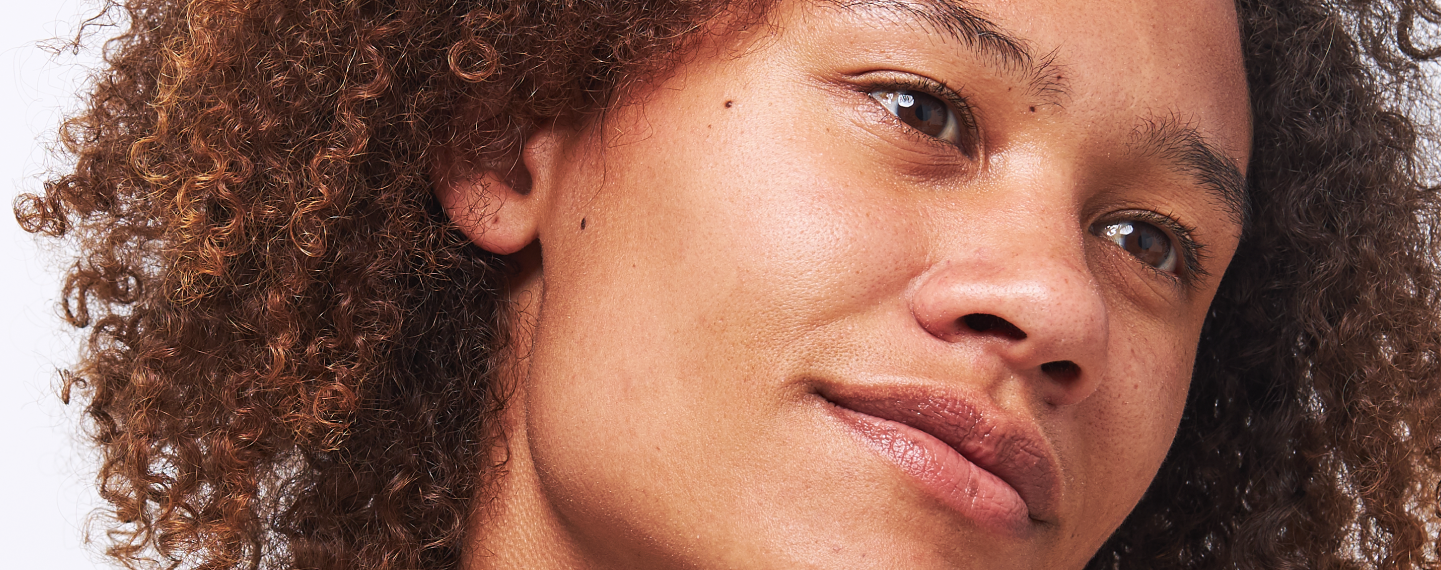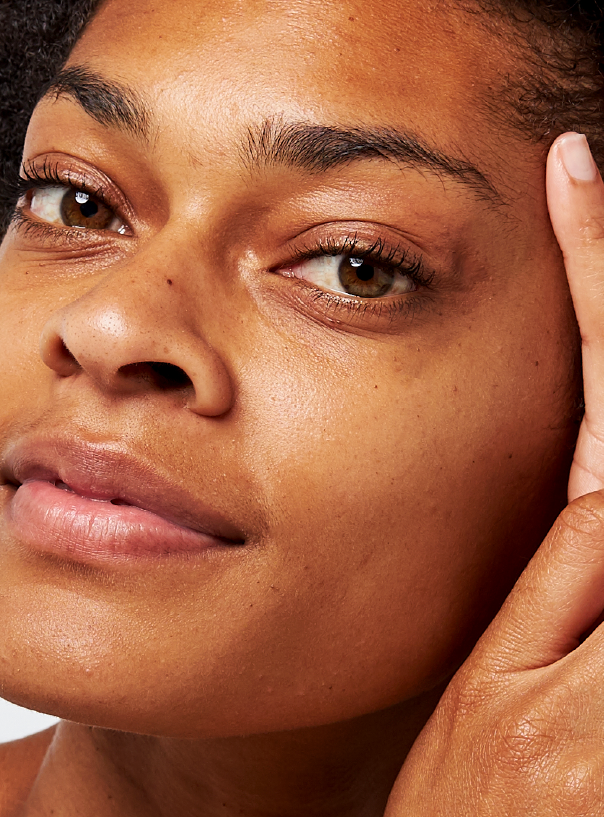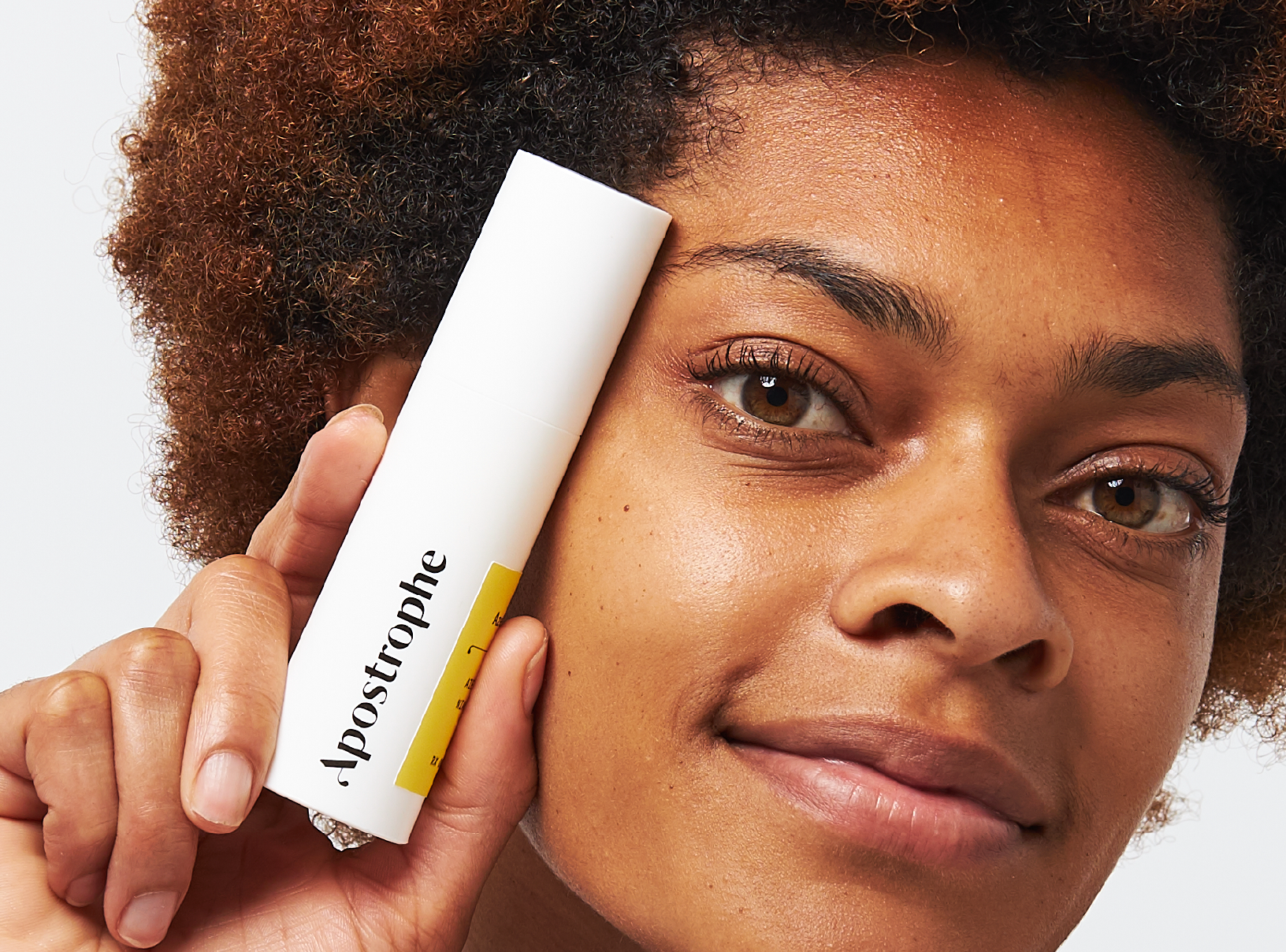Deep Dives
Hyaluronic Acid Before and After Results


SHARE
Deep Dives
Hyaluronic Acid Before and After Results
Medically reviewed by Mary Lucas, RN
Written by Apostrophe Team
Last updated 4/5/2024
It's in your face cream, it's all over your serums, you'll find it in your moisturizer and sometimes, even in your joint cream.
Hyaluronic acid is everywhere! This skincare ingredient is that instant celebrity with a million overnight followers and a book deal on the way, but is really worth the hype? We'll be breaking down what to expect when you use hyaluronic acid for your skin.
But first, we’ll take a look at this molecule, its benefits and side effects. Then, we’ll check out what studies have to say about the effectiveness of hyaluronic acid.
What Is Hyaluronic Acid?
Deep breath, technical terms coming your way — hyaluronic acid is an anionic, nonsulfated glycosaminoglycan distributed widely across your body's tissues.
A little closer to earth, this simply means that hyaluronic acid has several critical functions in your body, one of which is to help provide your skin and tissues with lubrication. This helps ensure your body’s optimal performance.
Hyaluronic acid is a sugar molecule that occurs naturally in the body. The largest amount of this molecule in the body — about half of its volume, is found in the skin. This is a good thing because hyaluronic acid is great for keeping your skin moisturized and helping it retain moisture.
It is also found in your eye and connective tissue.
Why Is Hyaluronic Acid Important in Skincare?
What is hyaluronic acid good for? As you get older, time does a number on your body — your eyesight isn't so golden, grays take over your hair, and your back may sometimes require a sign that says "fragile."
On the inside, things are changing as well. Your body stops producing as much hyaluronic acid which can affect its moisture content. Without being well hydrated, your skin may begin to display signs of aging.
Studies have shown that supplementing your skin's supply of hyaluronic acid with topical products, oral tablets or fillers may enhance the benefits your skin obtains from this acid.
Skincare Benefits of Hyaluronic Acid
Hyaluronic acid keeps the skin hydrated
You can say many things about hyaluronic acid, but you can't say it isn't committed to helping your skin attract and retain as much moisture as it can.
This compound is able to hold 1000 times its weight in water.
Keeping your skin hydrated is a big deal if you want to promote your skin appearance and health.
Water helps to keep your skin plump and resilient. It is also a major factor of its elasticity.
Dehydrated skin has compromised elasticity. If you pinch your skin and it takes some time to return to its normal state (a process called tenting), your skin needs moisture STAT, and hyaluronic acid is a great source.
This acid promotes skin barrier function
When you weren't looking, UVA and UVB rays from the sun, pollutants, cigarette smoke, and other harmful substances in the environment conspired to damage your skin.
Thanks to your natural barrier (the outermost layer of your skin), you may not have noticed the effects. However, with age causing a decline in the skins barrier abilities, there is room for damage to occur as shown in wrinkles, fine lines, and skin sagging.
By sealing moisture into the skin barrier, hyaluronic acid is able to reinforce barrier function. This moisture can help to keep your skin hydrated and reduce the effects of aging.
The appearance of wrinkles and fine lines is reduced by hyaluronic acid
In your youth, hyaluronic acid helped ensure that your skin retained its fill of water and then some (“eight glasses of water” and then some,) thanks to its impressive hydrating abilities. This helped your skin remain youthful and supple.
As you progress in age however, reduced hyaluronic acid content and skin damage from sun exposure and other factors tend to speed up the clock on your skin, causing wrinkles, altered elasticity, fine lines etc.
Studies have shown that applying hyaluronic acid may reduce the appearance of age in the skin.
Hyaluronic acid also has perceived benefits for wound healing. As a key component of synovial fluid, hyaluronic acid is used for joint pain relief, and you’ll find it in many joint and muscle creams.
What to Expect When You Use Hyaluronic Acid on Your Skin
In a three-month study carried out on 40 caucasian women between the ages of 25 and 55, participants were to test out a hyaluronic acid filler against a placebo to determine how effective it was in filling facial volume and anti-aging.
The women were to assess their progress after seven, 14, and 30 days of using the product.
In those respective times, the filler's face contour lifting effect was tested.
The women in the active group using the hyaluronic acid filler showed a shorter distance between face contours, this represented a decrease in skin sagging in the women.
Those in the placebo group reported worsened skin sagging.
A similar report was made when the filler's cheekbone volumizing/plumping effect was evaluated. The active group saw progress in cheekbone volume while the placebo group worsened.
When the hyaluronic acid filler was tested on wrinkle volume, those in the active group recorded decreased volume on day thirty. No changes were recorded in the placebo group.
Similar differences in results were recorded when both groups evaluated wrinkle depth on day fourteen.
This study determined that hyaluronic acid was effective in improving the appearance of skin that showed signs of aging.
Another study carried out on 33 women with an average age of 45.2 lasted for eight weeks. In that time they were to test out the effectiveness of a new topical nano-hyaluronic acid on wrinkles.
The women were to use a product range of lotions, serums and creams with results assessed after two, four and eight weeks of treatment.
After just two weeks of use, the women showed finer skin structure while skin elasticity improved after two and eight weeks of using the product.
At the end of the study, it was determined that hyaluronic acid had significant benefits in decreasing wrinkle depth with about a 40 percent decrease. Skin hydration went up by around 96 percent while skin firmness and elasticity improved by around 55 percent at the end of the study.
Hyaluronic acid may also be useful in healing wounds by making biological scaffolds. These scaffolds are usually made up of proteins that are connected to the acid. These proteins permit cells to migrate into the wounds for the healing process.
Hyaluronic acid is also able to maintain a moist environment around the wound which allows cell migration into it for healing activities.
In a study to test the effectiveness and safety of hyaluronic acid in managing acute wounds, 43 patients with trauma wounds, surgical sutures, burns, and dermabrasions were to apply and evaluate hyaluronic acid as a cream or dressing for a maximum of nine times.
By the sixth evaluation of the wounds, a 70 percent decrease in surface area of the wounds was noticed. Complete healing occurred in 56 percent of cases.
This study indicated that hyaluronic acid could be useful in healing acute injuries.
We should note that there wasn't a standard wound dressing method adopted to offer a comparison.
Side Effects
Don't let the word "acid fool you, hyaluronic acid is a largely safe compound.
Its use in topical products like gels, and creams has been found to have next to no adverse effects.
Likewise, the oral ingestion of hyaluronic acid has been found to be safe.
However, there are a few side-effects associated with hyaluronic acid fillers. You may notice pain, bruising, redness, itching and swelling after use.
But don't worry too much about it, these effects should wear off after a few days.
In Conclusion
Thanks to its incredibly hydrating abilities, hyaluronic acid could become your favorite skincare ingredient.
You can find it in serums, gels, creams, moisturizers and more, to give added moisture to your skin and to reduce the appearance of aging.
Like what you just read? Sign up for our email list to get the scoop on skincare science delivered straight to your inbox.

Deep Dives
A dermatologist shares his thoughts on the recent studies about benzoyl peroxide and benzene.
Read More
Education
What is milia?
What is milia? Today, we’re jumping into one type of bump that you may have heard about most commonly in infants — milia.
Read More
Education
Best moisturizer for acne-prone skin
If you have combination acne-prone skin, figuring out which moisturizer is best for your skin might be tough. In this guide, we break down the best moisturizer for combination, acne-prone skin.
Read More
